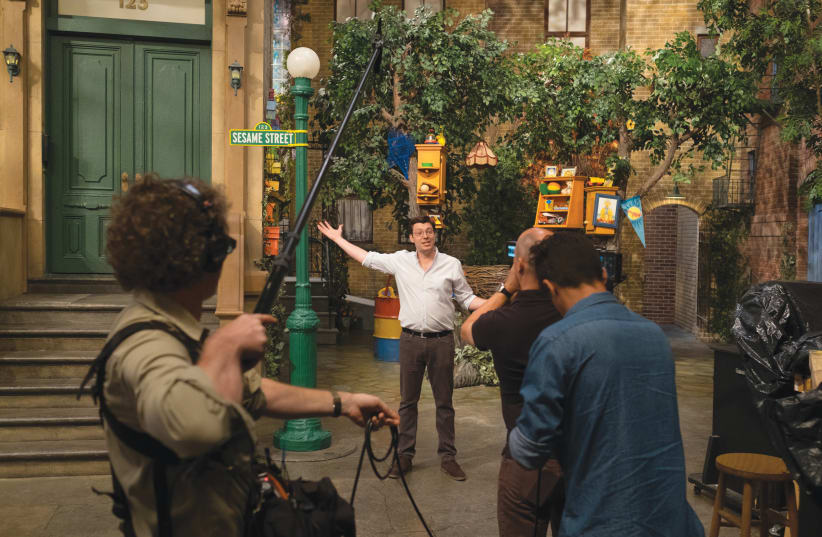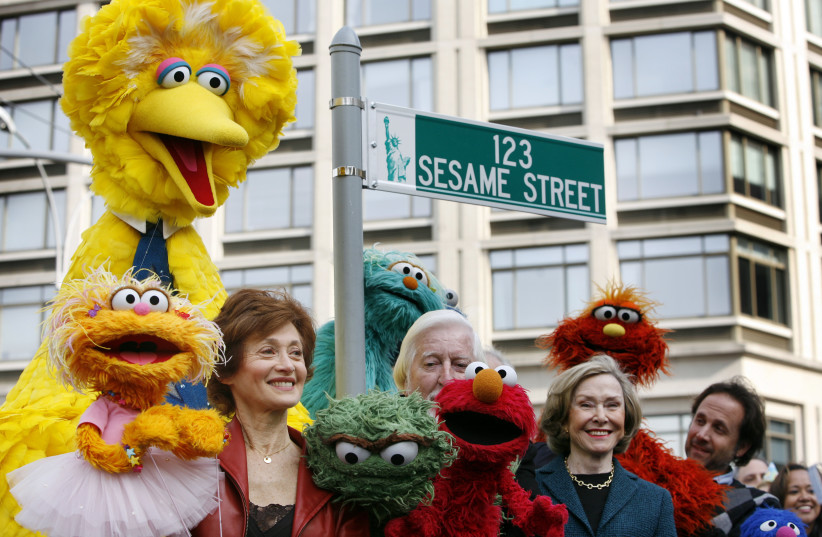One of the highlights of the Haifa International Film Festival will be a festive screening of the new documentary, Street Gang: How We Got to Sesame Street, on September 25, that will feature an online conversation with the film’s creators, as well as a free outdoor event for children and adults with actors and directors from Israel’s version of the series, Rehov Sumsum, with puppets and music.
Director Marilyn Agrelo, producer Ellen Scherer Crafts from Street Gang, senior Sesame Street producer Benjamin Lehmann and Alona Abt, one of the founders of the Hop! children’s media group and a producer of Rehov Sumsum in Israel will participate in the online event.
The documentary is a smart, funny and entertaining movie about the smartest, funniest and most entertaining series ever for young children. But it is also moving, because it tells about the serious mission that drove those who created Sesame Street: to try to make up for educational inequality between black and white children and to try to stop underprivileged children from falling behind in school.
The documentary, which is geared at adults, explores the perfect (and perfectly wonderful) storm of elements that came together to create the show. It is not a comprehensive documentary about the entire history of the show, which began running over 50 years ago and it does not get into certain controversies (the period it covers ends long before the scandal involving Kevin Clash, the puppeteer who performed as Elmo and left after he was accused of having sexual relationships with underage teenagers) and cannot fully cover all of the high points of the show’s music, the magic that many celebrities brought to it or the indescribable popularity of its Muppet characters, that led to hugely lucrative merchandising deals, which insured that the show will never run out of funds.
But it gets into the what made the show unique and important, as it details how the idea to meld an educational show with a very entertaining one came about when television producer Joan Ganz Cooney and Carnegie Foundation vice president Lloyd Morrisett started kicking around ideas in 1966 for a show that would use Madison Avenue techniques to teach urban children. The show was created with funding from Carnegie in 1969.
It was an instant and huge success for Cooney and her collaborator, director/writer Jon Stone, whom the documentary presents as the unsung hero of the show, since Cooney, being the rare woman in television, got the lion’s share of the publicity. They worked with both educational experts and seasoned comedy writers to create a show they hoped would appeal to the target audience.
STONE WAS instrumental in making the show what it became in many ways, but two stand out. One is that he brought in his buddy, the genius puppeteer Jim Henson, and the other was that he realized it should be set on a city street to appeal to urban children, since all the rest of the kiddie shows took place in white bread suburbs or generic fantasy lands.
Cooney and Stone learned from the children they hoped would watch the show by doing extensive test screenings, which taught them that the Muppets could not be only in separate segments, but had to be residents of the street. That the street was racially and ethnically mixed was a given and later its cast was expanded to include characters with special needs. Another lesson that came up was death and when the actor Will Lee who played Mr. Hooper died, Big Bird learned that meant he was never coming back.
They realized, through research, that children absorbed the lessons of the show more thoroughly when adults watched with them, to reinforce what they saw, and that pushed them to make the show more satirical and irreverent. But they always made sure the gags that adults would enjoy would be funny in some way for children.
Much of the fun in the movie comes from hearing the creators reminisce about how they came up with and worked on the best loved characters, such as Oscar the Grouch (“We wanted to show that not everyone is nice,” said Stone), Big Bird and, of course, Ernie and Bert. Frank Oz, who had a career as a movie director after he left the show, played Bert to Henson’s Ernie and it was a wild and wonderful scene to be a part of.
Nick Raposo, the son of Joe Raposo, who composed much of the show’s iconic music (including “Sing,” which the Carpenters turned into a top 40 hit), recalled, “One thing that I will credit Joan Ganz Cooney with is she let these guys do what they could do. They had ideas and behaviors and concepts that were just off the wall and they were allowed to do it and that’s what people loved. They felt the lunacy on the screen, the contained madness.”
But the fun was in service of the higher ideal of making education accessible to all, which is what drove the creators to push themselves so hard (their children recall that they would often spend four days straight in the studio). Said Joe Raposo: “It was chaos but it was the chaos of people dedicated to a real ideal, believing that something could be done and having the will to do it and it was the most exciting period of our lives.”
Street Gang is a fascinating glimpse into one of the most innovative and imaginative shows of all time, but also one of the most meaningful. In the end, in addition to educating people, the creators brought a great deal of joy to those who watch the show.
As Raposo recalled, “I remember Jim Henson and Frank Oz doing a puppet bit and everybody hysterical and Jim saying, ‘What are we teaching?’ and Jon Stone saying, ‘Happiness, that’s the ticket... ’”
For more information go to haifaff.co.il

